Vehicle Consumption

What is the average fuel consumption of a typical fuel vehicle ?
The average fuel consumption of a typical fuel vehicle can vary depending on several factors such as the type of vehicle, driving conditions, and maintenance. However, we can provide a general overview of the fuel consumption rates for different types of vehicles: - Small cars typically have better fuel efficiency than larger vehicles, with an average fuel consumption of around 6-8 liters per 100 kilometers (L/100km). - Midsize cars usually have slightly higher fuel consumption rates compared to small cars, with an average fuel consumption of around 8-10 L/100km. - Large cars generally have higher fuel consumption rates due to their larger size and weight, with an average fuel consumption of around 10-12 L/100km. - Small SUVs are becoming increasingly popular and offer relatively good fuel efficiency, with an average fuel consumption of around 9-11 L/100km. - Midsize SUVs are larger and heavier than small SUVs, resulting in higher fuel consumption rates, with an average fuel consumption of around 11-13 L/100km. - Large SUVs are the largest and heaviest vehicles in this category, leading to higher fuel consumption rates, with an average fuel consumption of around 13-15 L/100km. - Light duty pickups are designed for carrying light loads and offer reasonable fuel efficiency, with an average fuel consumption of around 12-14 L/100km. - Medium duty pickups are larger and more powerful than light duty pickups, resulting in higher fuel consumption rates, with an average fuel consumption of around 14-16 L/100km. - Heavy duty pickups are designed for heavy-duty tasks and have the highest fuel consumption rates among pickup trucks, with an average fuel consumption of around 16-18 L/100km. It's important to note that these figures are just estimates and actual fuel consumption can vary based on individual driving habits, vehicle condition, and other factors. Additionally, newer vehicles with advanced technology may have lower fuel consumption rates than older models.
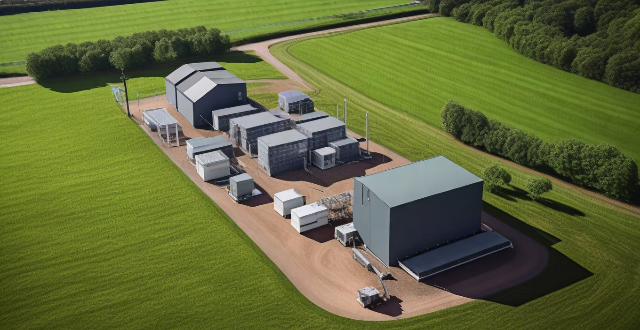
How efficient is a Compound Hybrid Electric Vehicle in terms of fuel consumption ?
Compound Hybrid Electric Vehicles (CHEVs) are efficient in terms of fuel consumption due to their dual power sources, regenerative braking, advanced energy management system, aerodynamic design, and weight reduction.
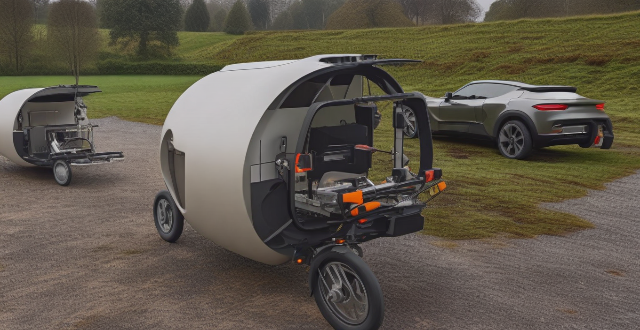
How does a Series Hybrid Electric Vehicle impact the environment ?
Series hybrid electric vehicles (SHEVs) have a positive impact on the environment through reduced emissions and improved fuel efficiency. However, challenges such as battery production and waste management must be addressed to maximize their environmental benefits. The overall impact also depends on factors like the source of electricity for charging and vehicle design efficiency.

How do hub motors affect the handling and performance of a vehicle ?
Hub motors offer numerous benefits for vehicle handling and performance, including improved weight distribution, torque vectoring, and energy recovery through regenerative braking. These features enhance a vehicle's overall efficiency, stability, and performance. As technology advances, we can expect to see more innovative uses for hub motors in the automotive industry.

How does a Series Hybrid Electric Vehicle work ?
A series hybrid electric vehicle (SHEV) is a type of hybrid car that utilizes two power sources: an internal combustion engine (ICE) and an electric motor. The ICE generates electricity to charge the battery pack, which in turn powers the electric motor to propel the vehicle. The main components of a series hybrid electric vehicle include the ICE, battery pack, and electric motor. The working process of a series hybrid electric vehicle involves starting the vehicle with the electric motor drawing power from the battery pack, driving at low speeds or during city driving using only the electric motor, increasing speed or accelerating by starting up the ICE to generate electricity and charge the battery pack, regenerative braking to convert kinetic energy into electrical energy and store it in the battery pack, charging the battery pack when its state of charge falls below a certain level, steady-state driving on highways with the ICE running at its optimal speed while the electric motor provides necessary power, and shutting down both the ICE and electric motor when the vehicle is turned off. Series hybrid electric vehicles offer benefits such as improved fuel efficiency, lower emissions, reduced wear and tear on the ICE, and regenerative braking.

How does a Compound Hybrid Electric Vehicle work ?
A compound hybrid electric vehicle (CHEV) is a type of hybrid vehicle that combines the power of an internal combustion engine (ICE) with two or more electric motors, aiming to improve fuel efficiency, reduce emissions, and increase overall performance. The system intelligently manages multiple power sources to provide an efficient, powerful, and environmentally friendly driving experience.

Can you drive a parallel hybrid electric vehicle (PHEV) on electricity alone ?
This article discusses the capabilities of parallel hybrid electric vehicles (PHEVs) and their ability to operate solely on electricity. It explains that PHEVs have an electric-only mode that allows them to drive without using the internal combustion engine, but this mode is typically limited to lower speeds and lighter load conditions. The article also highlights the benefits of electric-only driving, such as reduced emissions, quieter operation, and improved fuel efficiency. However, it notes that several factors can affect the electric-only range of a PHEV, including battery size, driving conditions, vehicle load, and tire pressure. Overall, the article emphasizes the importance of understanding your PHEV's capabilities and limitations to maximize its potential for eco-friendly driving.

Are there any government incentives for buying an electric vehicle ?
This text discusses the various government incentives available for buying an electric vehicle, including federal tax credits and income tax exemptions, state rebates and grants, sales tax exemptions, high-occupancy vehicle lane access, local parking benefits, and carpool lane access.
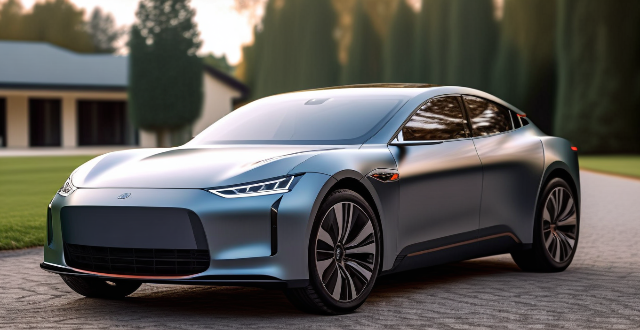
What are the benefits of owning a parallel hybrid electric vehicle (PHEV) ?
Owning a parallel hybrid electric vehicle (PHEV) offers numerous benefits, including reduced emissions and conservation of fossil fuels, leading to environmental advantages. Economically, PHEVs provide fuel cost savings and potential tax incentives. They also offer performance benefits such as silent operation, regenerative braking, and instant torque. Additionally, PHEVs often come with advanced technology and features, preparing owners for a future with more electric vehicles. Overall, PHEVs combine environmental responsibility, economic savings, performance enhancements, and technological innovation, making them an attractive sustainable mobility option.

How does a Series Hybrid Electric Vehicle compare to a Parallel Hybrid Electric Vehicle ?
Comparison between Series Hybrid Electric Vehicle and Parallel Hybrid Electric Vehicle highlights the differences in power transmission, battery dependency, fuel efficiency, performance, cost, complexity, and regenerative braking capabilities of both types. The series hybrid is more efficient for city driving, while the parallel hybrid suits highway driving better. The choice depends on the user's driving habits and needs, with both offering environmental and economic benefits over traditional vehicles.

What are the benefits of sustainable consumption ?
The text discusses the benefits of sustainable consumption, which include environmental protection, economic benefits, social well-being, and ethical considerations. By making conscious choices about what we consume and how we dispose of our waste, we can reduce our carbon footprint, conserve natural resources, preserve biodiversity, save costs, create jobs, promote healthier lifestyles, ensure equitable distribution of resources, build community, protect animal welfare, support fair trade, and encourage transparency and accountability in businesses. Sustainable consumption is crucial for creating a more sustainable future for ourselves and future generations.

Are there any government incentives for purchasing a Series Hybrid Electric Vehicle ?
Government incentives for purchasing a Series Hybrid Electric Vehicle (HEV) vary by country and may include tax credits, rebates, exemptions from fees, charging infrastructure support, and parking benefits. These incentives can help offset the higher initial purchase price of HEVs compared to conventional gasoline vehicles.

How can we promote sustainable consumption ?
Sustainable consumption is a key factor in achieving a sustainable future. It involves making conscious choices about the products we buy, the resources we use, and the impact we have on the environment. Here are some ways to promote sustainable consumption: 1. Education and Awareness: Raise awareness about the importance of sustainable consumption; provide information on sustainable products and services; encourage responsible consumption habits. 2. Government Policies and Incentives: Implement policies that support sustainable consumption; offer incentives for sustainable practices; encourage circular economy principles. 3. Corporate Responsibility and Innovation: Encourage corporate responsibility; foster innovation in sustainable products and services; collaborate with stakeholders. 4. Community Action and Collaboration: Organize community events; create networks of sustainable businesses; engage with schools and youth organizations. By taking these actions at individual, community, business, and government levels, we can collectively move toward a more sustainable future where our consumption patterns support rather than harm the planet.

How does ecological design address issues related to water management and consumption ?
Ecological design addresses water management and consumption issues through strategies such as rainwater harvesting, water recycling, using native plants in landscaping, installing efficient water fixtures, permeable paving, smart water management systems, and promoting education on water conservation.

How do I install an electronic speed controller in my vehicle ?
An Electronic Speed Controller (ESC) is a device that regulates the speed of an electric motor. It is commonly used in RC cars, drones, and other electronic devices to maintain consistent speed and improve performance. In the context of vehicles, an ESC can be used to control the speed of electric motors in electric or hybrid cars. Installing an ESC in your vehicle involves several steps, which may vary depending on the specific model and make of your vehicle. Here's a general guide to get you started: 1. Choose the right ESC for your vehicle. 2. Disconnect the battery before working on any electrical system in your vehicle. 3. Remove the old controller (if applicable). 4. Mount the ESC in a suitable location within your vehicle. 5. Connect wires and motor according to the manufacturer's instructions. 6. Reconnect the battery and test the system. There are several reasons why you might want to install an ESC in your vehicle, including improved performance, better control, and additional safety features such as overcurrent protection. When installing an ESC, it's important to follow the manufacturer's instructions, wear protective gear, and seek professional assistance if needed.

What is the driving range of a Series Hybrid Electric Vehicle ?
The driving range of a Series Hybrid Electric Vehicle (SHEV) is influenced by factors such as battery pack size, electric motor efficiency, and vehicle weight. Most SHEVs have a combined driving range of around 30-50 miles per gallon equivalent (MPGe), but actual range may vary due to factors like driving conditions and use of accessories. Proper maintenance and consideration of these factors can help maximize the fuel efficiency and environmental benefits of a SHEV.

How does a parallel hybrid electric vehicle (PHEV) work ?
Parallel hybrid electric vehicles (PHEVs) are a type of hybrid vehicle that combines an internal combustion engine (ICE) with an electric motor. The two power sources can work independently or together, depending on the driving conditions. PHEVs have three operating modes: ICE only, electric motor only, and combined power. The energy management system controls the operation of the ICE and electric motor, deciding which power source to use based on driving conditions, battery state of charge, and other factors. PHEVs offer benefits such as improved fuel efficiency, reduced emissions, tax incentives, and reduced dependence on fossil fuels.

What are the challenges to achieving sustainable consumption ?
The text discusses the various challenges to achieving sustainable consumption, including lack of awareness and education, economic barriers, cultural and social norms, infrastructure and accessibility issues, technological limitations, policy and regulatory challenges, business practices, and consumer behavior. It emphasizes the need for a multifaceted approach involving education, policy changes, technological advancements, and cultural shifts towards more sustainable consumption patterns to overcome these challenges and move towards a more sustainable future for all generations.

Can reducing meat consumption lower my carbon footprint ?
Reducing meat consumption can lower your carbon footprint by decreasing the demand for livestock, which produces greenhouse gases and requires significant resources. This dietary change also conserves water and land, improves health, and supports a more sustainable food system.

What role do consumers play in promoting sustainable consumption ?
The article explores the role of consumers in promoting sustainable consumption. It emphasizes the importance of education and awareness, reducing waste, reusing items, recycling materials, supporting sustainable businesses, and advocating for change as key strategies for consumers to contribute to sustainable consumption. The article highlights the significance of these strategies in reducing environmental impact and conserving resources for a more sustainable future.

How should I prepare my vehicle for a long-distance road trip ?
Preparing Your Vehicle for a Long-Distance Road Trip A long-distance road trip is an exciting adventure, but it's essential to ensure that your vehicle is in top condition before hitting the open road. Here are some steps you can take to prepare your car for the journey ahead: Check the basics such as tires, fluids, lights, and battery. Perform safety checks on brakes, suspension, belts, and hoses. Make sure your entertainment system and charging ports are working correctly. Consider installing seat covers and using organizers or storage solutions to keep items tidy and accessible during the trip. Don't forget to pack an emergency kit with jumper cables, a flashlight, reflective triangles, and a first aid kit just in case you encounter any issues along the way.

How long does a typical power battery last in an electric vehicle ?
Electric vehicles (EVs) have become increasingly popular due to their environmental benefits and lower operating costs. One of the most common concerns for potential EV owners is the lifespan of the vehicle's power battery. In this article, we will explore the typical lifespan of a power battery in an electric vehicle and factors that can affect it. The lifespan of a power battery in an electric vehicle depends on several factors, including the type of battery, driving habits, and maintenance practices. However, a general rule of thumb is that a typical power battery lasts between 8-15 years or 100,000-200,000 miles. Several factors can impact the lifespan of a power battery in an electric vehicle. These include: - Type of Battery: The two most common types of batteries used in EVs are lithium-ion and nickel-metal hydride. Lithium-ion batteries generally have a longer lifespan than nickel-metal hydride batteries. - Driving Habits: Frequent rapid acceleration and braking can shorten the lifespan of a power battery. Additionally, driving at high speeds and in hot temperatures can also negatively impact battery life. - Maintenance Practices: Proper maintenance practices, such as regularly checking and maintaining the cooling system, can help extend the lifespan of a power battery. Neglecting maintenance can lead to premature battery failure. - Charging Habits: Charging the battery to 100% every time can shorten its lifespan. It is recommended to charge the battery to around 80% to prolong its lifespan. As a power battery ages, it may start showing signs of failure. Some common signs include: - Reduced Range: If you notice a significant decrease in the distance your EV can travel on a single charge, it could be a sign that your power battery is failing. - Slow Charging: If your EV takes longer to charge than usual, it could be a sign that your power battery is losing capacity. - Decreased Performance: If you notice a decline in your EV's overall performance, such as slower acceleration or reduced top speed, it could be due to a failing power battery. - Bulging or Swelling: If you notice any physical changes to your power battery, such as bulging or swelling, it is a clear sign that it needs to be replaced. In conclusion, the typical lifespan of a power battery in an electric vehicle is between 8-15 years or 100,000-200,000 miles. However, several factors can impact the lifespan of a power battery, including the type of battery, driving habits, maintenance practices, and charging habits. By being mindful of these factors and properly maintaining your EV's power battery, you can help extend its lifespan and enjoy many years of reliable performance.

What is the impact of smart manufacturing on industrial energy consumption ?
Smart manufacturing, or Industry 4.0, is transforming industrial operations through AI, IoT, and robotics to boost efficiency and sustainability. One major benefit is its impact on reducing energy consumption in industries. This article discusses how smart manufacturing can aid in decreasing energy usage: 1. **Optimization of Production Processes**: Real-time data analytics and predictive maintenance techniques lead to less energy waste and higher efficiency. Sensors monitor equipment performance to reduce downtime and energy consumption during repairs. 2. **Automation and Robotics**: Replacing manual labor with automated machines and robots results in higher precision and consistency while minimizing energy usage. Smart technologies also enable better resource allocation for reduced energy consumption. 3. **Energy Management Systems (EMS)**: EMS are crucial for monitoring and controlling energy consumption. They provide insights into energy usage patterns, allowing companies to identify areas where energy savings can be achieved. Implementing energy-saving measures based on EMS data can significantly cut energy consumption and costs. 4. **Renewable Energy Sources**: Smart manufacturing promotes the use of renewable energy sources like solar and wind power to reduce dependence on non-renewable sources like fossil fuels. This contributes to environmental sustainability by lowering greenhouse gas emissions. Integrating smart grids into industrial facilities further optimizes energy distribution and enhances efficiency. Overall, smart manufacturing significantly impacts industrial energy consumption by optimizing production processes, incorporating automation and robotics, implementing energy management systems, and promoting renewable energy sources. These advancements not only reduce energy waste but also contribute to environmental sustainability by lowering greenhouse gas emissions.
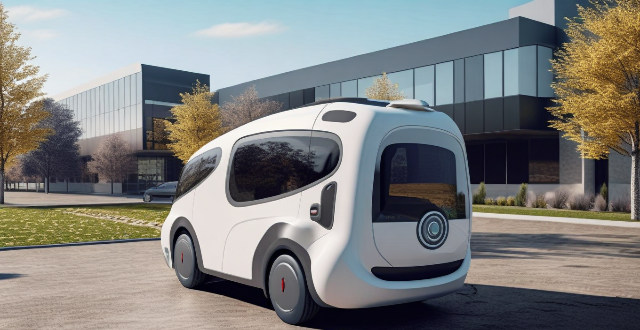
What is the maintenance required for a Series Hybrid Electric Vehicle ?
Maintaining a series hybrid electric vehicle (HEV) involves regular checks and replacements similar to conventional gasoline-powered vehicles, along with specific tasks for the electric components. These tasks include tire rotation and air pressure checks, battery state of charge monitoring, brake fluid exchange, oil changes, air filter replacement, spark plug inspection, belt and hose checks, electrical system maintenance such as battery pack health checks, electric motor lubrication, and inverter/converter diagnostics. Additional tips include following manufacturer guidelines, using genuine parts, scheduling regular check-ups, familiarizing with drive modes, avoiding heavy loads, keeping the interior tidy, and carrying an emergency kit.

Is it worth investing in a diesel hybrid vehicle for long-distance travel ?
Diesel hybrid vehicles offer high fuel efficiency and performance, making them suitable for long-distance travel. However, they come with higher costs and potential emission concerns. Alternatives like gasoline hybrids and electric vehicles might be worth considering depending on individual needs and circumstances.

How does the development of electric vehicle infrastructure affect the adoption rate of EVs ?
The development of electric vehicle infrastructure, including charging stations and supporting technologies, significantly influences the adoption rate of EVs. Availability and accessibility of charging stations are critical factors affecting EV adoption rates. Increased availability and reduced range anxiety can lead to higher demand for EVs and boost their adoption rate. Easy-to-find and accessible charging stations make it easier for potential EV owners to plan their trips and charge their vehicles as needed. The cost of charging an EV also affects its adoption rate, with affordable pricing and transparent pricing information encouraging more people to adopt EVs. Overall, the growth of electric vehicle infrastructure is crucial in determining the adoption rate of EVs.

How long does it take to charge a parallel hybrid electric vehicle (PHEV) ?
The charging time of a Parallel Hybrid Electric Vehicle (PHEV) is influenced by the battery pack size, charging method, and equipment used. Standard charging (Level 1) takes longer, while rapid charging (Level 2) significantly reduces charging time. Examples show that standard charging can take up to 15 hours for a full charge, while rapid charging can reduce this to 2-5 hours. Tips for faster charging include using rapid charging stations and ensuring high-quality charging equipment.
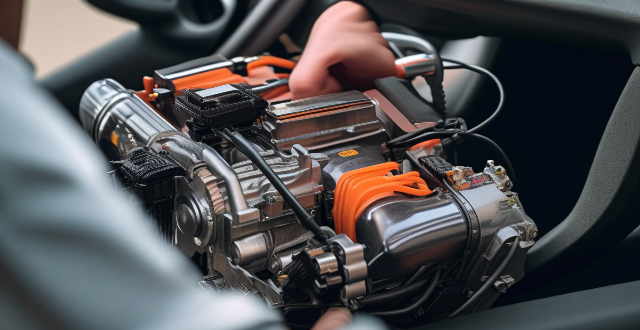
What are the advantages of a Series Hybrid Electric Vehicle ?
Series HEVs offer improved fuel efficiency, reducedSeries HEVs offer improved fuel efficiency, reduced and cost savings compared to conventional reduced emissions, enhanced performance, and cost savings compared to conventional vehicles. They use an internal combustion engine and an electric motor to power the vehicle, resulting in lower fuel consumption and emissions. Regenerative braking further improves fuel efficiency by converting kinetic energy into electrical energy. Series HEVs also provide instant torque for better performance and require no traditional transmission, reducing maintenance costs. Additionally, they have lower operating costs and may qualify for tax credits and incentives. Overall, series HEVs offer a more sustainable and environmentally friendly option for transportation.

What are the most effective ways to reduce energy consumption in households ?
Reducing energy consumption in households is crucial for both environmental sustainability and cost savings. Here are some of the most effective ways to achieve this goal: 1. **Upgrade to Energy-Efficient Appliances** * Switch to appliances with an Energy Star rating, which use less energy while providing the same level of performance. * Consider investing in a smart thermostat that can automatically adjust the temperature based on your schedule and preferences. 2. **Improve Insulation and Air Sealing** * Ensure your home is well-insulated to minimize heat loss in winter and heat gain in summer. * Seal any air leaks around windows, doors, and other gaps to prevent drafts and improve energy efficiency. 3. **Optimize Lighting** * Replace traditional incandescent bulbs with LED or CFL bulbs, which use significantly less energy and have longer lifespans. * Install motion sensors or timers to automatically turn off lights when not needed. 4. **Use Energy-Efficient Water Heaters** * Consider upgrading to a tankless water heater, which only heats water as it's needed rather than storing it in a tank. * Insulate your existing water heater and pipes to reduce heat loss. 5. **Reduce Standby Power Consumption** * Unplug electronics when not in use or use a power strip with an on/off switch to easily cut off standby power. * Look for devices with low standby power consumption or opt for smart power management features. 6. **Implement Solar Power** * Install solar panels to generate renewable energy for your home, reducing reliance on grid electricity. * Use solar-powered outdoor lighting and other small appliances wherever possible. 7. **Be Mindful of Heating and Cooling** * Set your thermostat a few degrees lower in winter and higher in summer to save on heating and cooling costs. * Use ceiling fans or portable fans to circulate air and reduce the need for air conditioning. 8. **Maintain Your Home Efficiently** * Regularly clean and maintain your HVAC system, chimney, and other appliances to ensure they run efficiently. * Check for any potential issues like leaky faucets or running toilets that could waste water and energy. 9. **Cook Efficiently** * Use pressure cookers or microwaves for cooking, which can be more energy-efficient than traditional ovens. * Keep your refrigerator and freezer organized and avoid overloading them, allowing air to circulate more freely.

How much does a Series Hybrid Electric Vehicle cost ?
This text discusses the cost of series hybrid electric vehicles (HEVs). The average price range of a new series HEV is between $20,000 and $40,000. Several factors affect this price range, including brand, model, features, battery pack size, and location. The article also highlights other factors that can influence the cost of a series HEV, such as fuel efficiency, electric motor power, driving range, and charging infrastructure availability. In conclusion, while series HEVs may have a higher upfront cost compared to traditional gasoline vehicles, they offer long-term savings on fuel and maintenance expenses. It is essential to research and compare different models based on specific needs and budget when considering purchasing a series HEV.